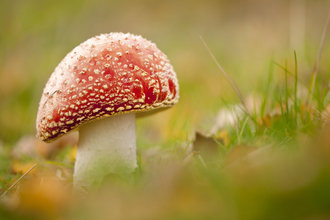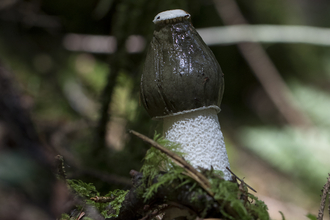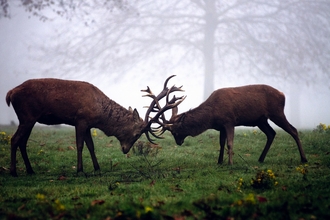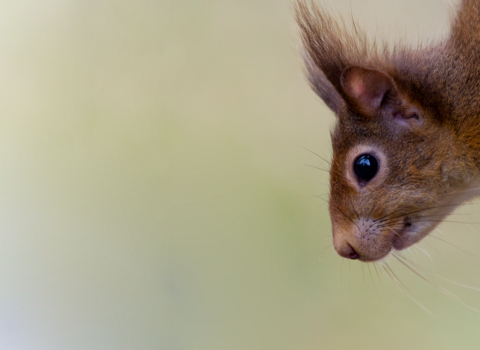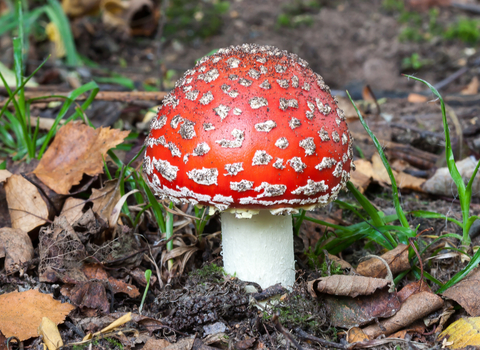
Fly agaric ©Mike Snelle

Fly agaric ©Ben Hall/2020VISION
Fly agaric
The classic fairy tale toadstool, this red and white fungus is often found beneath birch trees in autumn.
Scientific name
Amanita muscariaWhen to see
August to NovemberSpecies information
Category
Statistics
Cap diameter: 8-20cmStem height: 8-18cm
Conservation status
Common
About
Fly agaric is probably our most recognisable species of fungus, with the mushroom's distinctive red cap and white stalk featuring in countless stories, television shows and even video games! Fly agaric is found in woodlands, parks and heaths with scattered trees, typically growing beneath birch trees or pines and spruces. The colourful fruiting bodies can usually be seen between late summer and early winter.Like most fungi, the parts we see are just the fruiting bodies, or mushrooms. These grow up from an unseen network of tiny filaments called hyphae, which together form a structure known as the mycelium. The fruiting bodies produce spores for reproduction, although fungi can also reproduce asexually by fragmentation. The mycelium of fly agaric often forms a symbiotic relationship with the trees around it, wrapping around the roots and supplying them with nutrients taken from the soil. In exchange, the fungus receives sugars produced by the trees.
Fly agarics are poisonous and should not be eaten. Reports of deaths are rare, but ingestion often causes stomach cramps and hallucinations.
How to identify
The distinctive mushrooms have a red cap, either flat or rounded, often with a scattering of white spots or warts, and a white stem. The gills, beneath the cap, are free of the stem.Distribution
WidespreadDid you know?
Despite it being toxic to us, there are some animals that do eat fly agaric. These include red squirrels and slugs, as well as specialists such as fungus gnats - these flies lay eggs on the fungus, and when they hatch the larvae feed on the fruiting body.How people can help
Fungi play an important role within our ecosystems, helping to recycle nutrients from dead or decaying organic matter, and providing food and shelter for different animals. The Wildlife Trusts manage many nature reserves sympathetically for the benefit of all kinds of wildlife, including fungi: you can help by supporting your local trust and becoming a member. Our gardens are also a vital resource for wildlife, providing corridors of green space between open countryside. Try leaving log piles and dead wood to help fungi and the wildlife that depends on it.Watch
Fly agaric (https://vimeo.com/647245743)
Steve Downer

